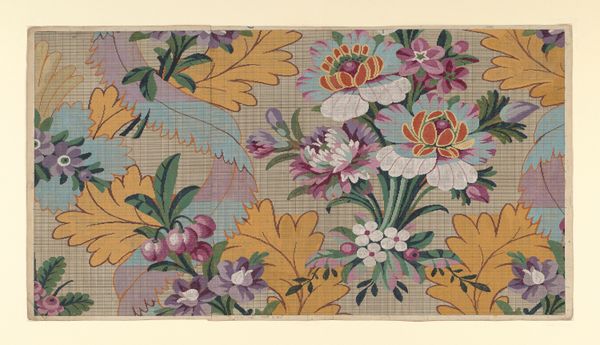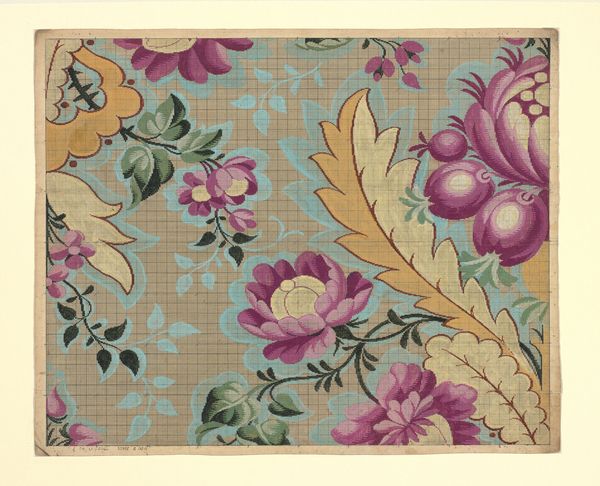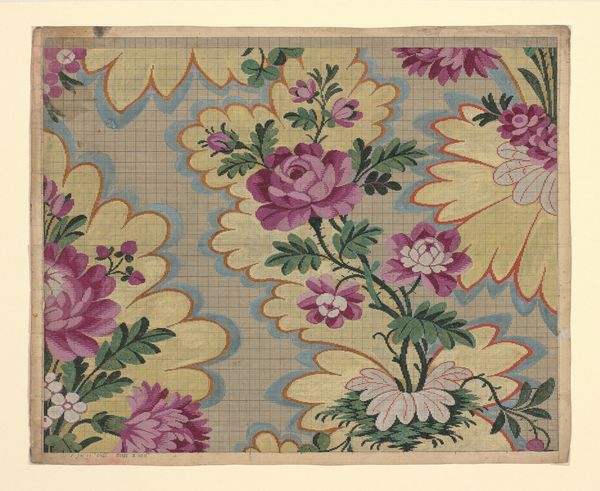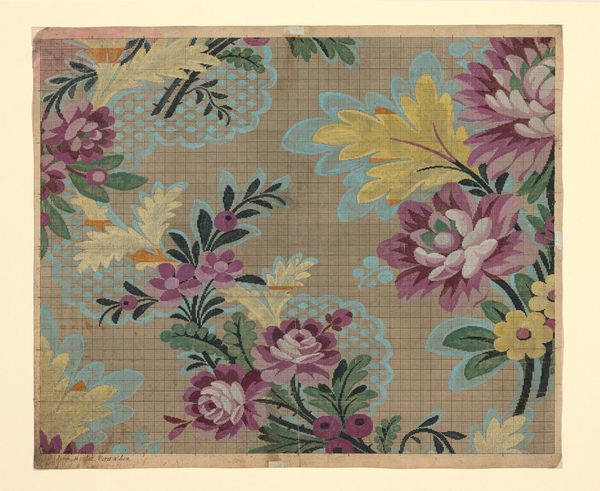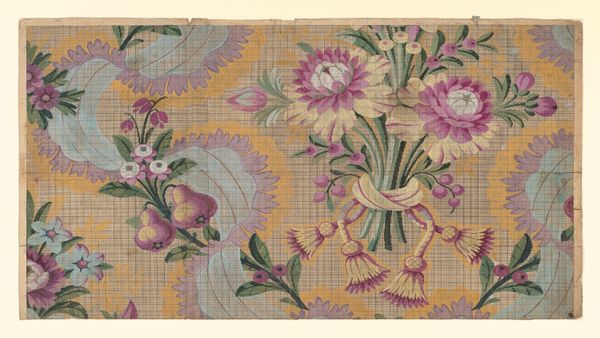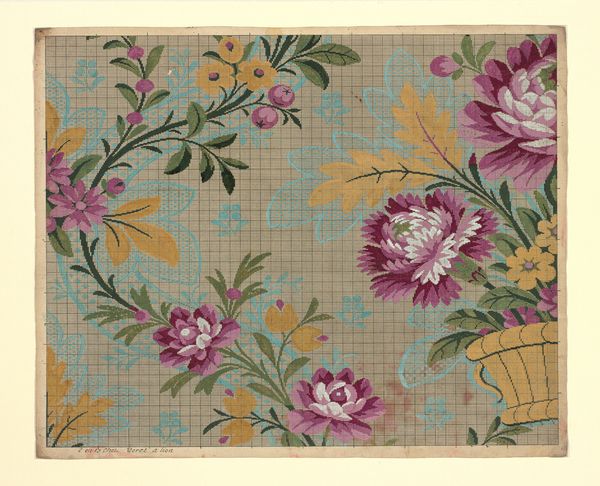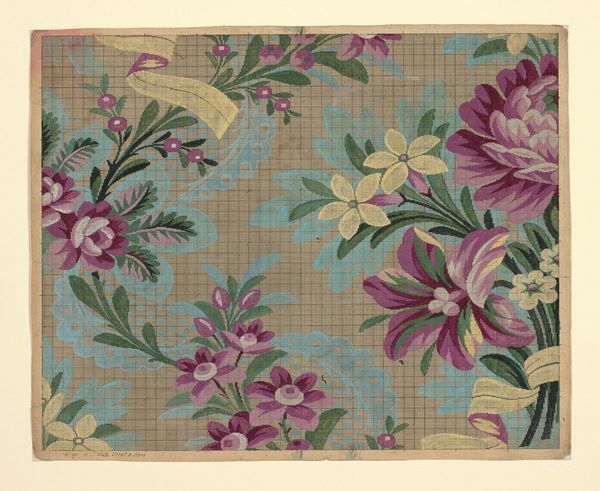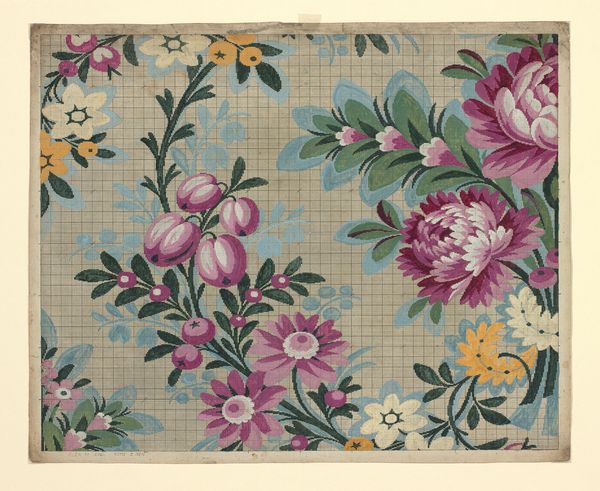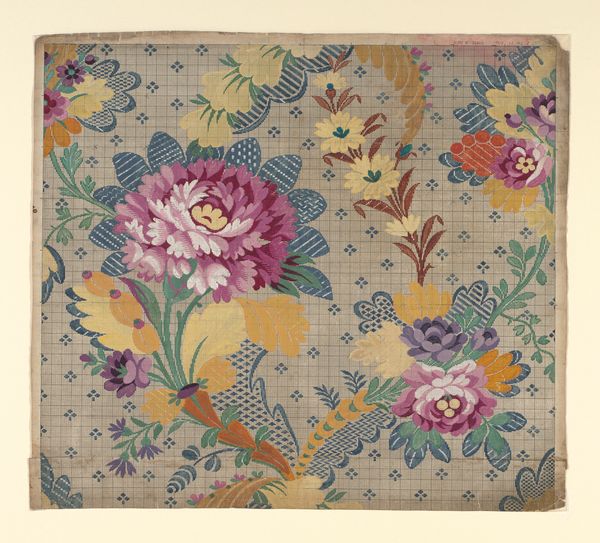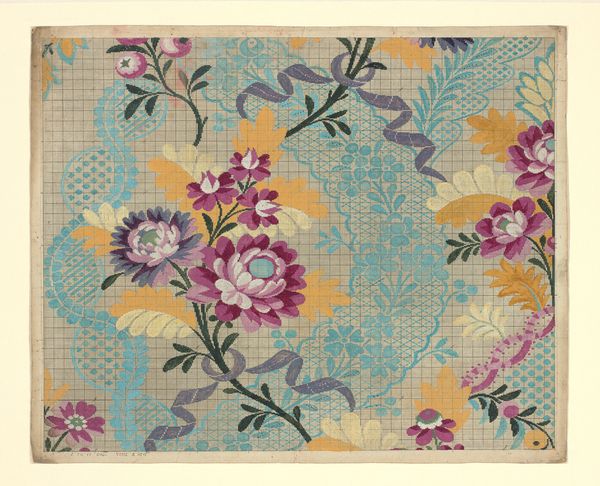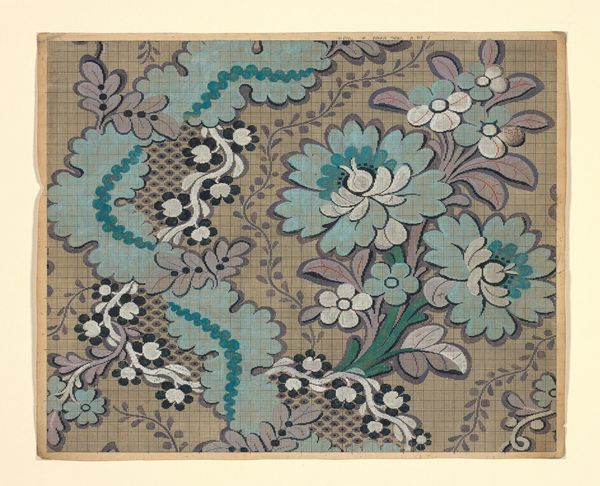
Dimensions: 45.45 × 55.9 cm (17 7/8 × 22 in.)
Copyright: Public Domain
Editor: This is "Mise-en-carte (Point-paper)," created between 1760 and 1790. It's a drawing, presumably on paper, designed for textile production, now held at the Art Institute of Chicago. It's a lovely, if rigidly formal, floral pattern. What can you tell me about this piece? Curator: Look closely at the grid beneath the floral design. The 'mise-en-carte' wasn't merely decorative; it was a crucial industrial tool. Each square represented a stitch in the loom. This drawing dictated the precise pattern woven into the fabric. It's essentially a codified system translating artistic vision into manufacturable product. How does considering this shift your understanding? Editor: It makes me think about the artisans who would have translated this design into fabric. It wasn’t just art for art's sake. It was a very specific set of instructions. Curator: Exactly. This piece allows us to consider the hierarchy of labor, from the designer of the 'mise-en-carte' to the weaver executing the pattern, often working under harsh conditions. What does the Rococo style tell us about the intended market for this textile design, and perhaps the class dynamics at play? Editor: The Rococo style, with its emphasis on ornamentation and luxury, suggests that it would be aimed at a wealthy consumer base. Curator: Precisely. The materials themselves—the dyes, the fabrics they were used on—were all commodities embedded within complex networks of trade and exploitation. Each flower and flourish can be understood as a product of these systems. What does this perspective, tracing the artwork’s origins to raw materials and labor, highlight for you? Editor: It really changes how I see it. The design becomes less about aesthetics and more about the economic forces at play. Curator: And the human cost. These seemingly delicate designs represent not only luxury, but also the often-invisible hands that created them. Editor: This definitely gives me a lot to consider regarding the relationship between art, labor, and consumerism.
Comments
No comments
Be the first to comment and join the conversation on the ultimate creative platform.
